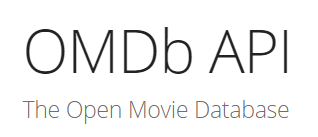Mock sample for your project: U.S. EPA Enforcement and Compliance History Online (ECHO) - Enforcement Case Search API
Integrate with "U.S. EPA Enforcement and Compliance History Online (ECHO) - Enforcement Case Search API" from epa.gov in no time with Mockoon's ready to use mock sample

U.S. EPA Enforcement and Compliance History Online (ECHO) - Enforcement Case Search
epa.gov
Version: 1.0.0
Start working with "U.S. EPA Enforcement and Compliance History Online (ECHO) - Enforcement Case Search API" right away by using this ready-to-use mock sample. API mocking can greatly speed up your application development by removing all the tedious tasks or issues: API key provisioning, account creation, unplanned downtime, etc.
It also helps reduce your dependency on third-party APIs and improves your integration tests' quality and reliability by accounting for random failures, slow response time, etc.
Description
Enforcement and Compliance History Online (ECHO) is a tool developed and maintained by EPA's Office of Enforcement and Compliance Assurance for public use. ECHO provides integrated compliance and enforcement information for over 1 million regulated facilities nationwide.
CASE Rest Services provide multiple service endpoints, each with specific capabilities, to search and retrieve data on civil cases entered into the
Integrated Compliance Information System (ICIS) and criminal cases entered into the Summary of Criminal Prosecutions database.
See Enforcement Case Search Help (https://echo.epa.gov/help/enforcement-case-search-help) for additional information on searching civil and criminal cases.
\
The getcases, getmap, getqid, and getdownload end points are meant to be used together, while the enhanced getcaseinfo end point is self contained..
The recommended use scenario for getcases, getqid, getmap, and getdownoad is:
\
1) Use getcases to validate passed query parameters, obtain summary statistics and to obtain a queryid (QID). QIDs are time sensitive and will be valid for approximately 30 minutes.
2) Use get_qid, with the returned QID, to paginate through arrays of case results.
3) Use get_map, with the returned QID, to zoom in/out and pan on the clustered and individual facility coordinates, related to the returned cases, that meet the QID query criteria.
4) Use get_download, with the returned QID, to generate a Comma Separated Value (CSV) file of facility information that meets the QID query criteria.
\
In addition to the service endpoints listed above there are two detailed case report services, one for civil cases (getcasereport) and one for criminal cases (getcrcasereport).
See the Civil Enforcement Case Report Help (https://echo.epa.gov/help/reports/enforcement-case-report-help) and the Criminal Case Report Help (https://echo.epa.gov/help/reports/criminal-case-report-help) for additional information
on then data returned from these two services.
\
Additional ECHO Resources: Web Services, About ECHO's Data, Data Downloads
Other APIs by epa.gov

U.S. EPA Enforcement and Compliance History Online (ECHO) - Clean Air Act
Air Rest Services provides multiple service endpoints, each with specific capabilities, to search and retrieve data on facilities regulated under the Clean Air Act (CAA). The returned results reflect data drawn from EPA's ICIS-Air database.
The getfacilities, getmap, getqid, and getdownload end points are meant to be used together, while the enhanced getfacilityinfo end point is self contained.
The getfacilityinfo end point returns either an array of state, county or zip clusters with summary statistics per cluster or an array of facilities.
The recommended use scenario for getfacilities, getqid, getmap, and getdownoad is:
1) Use getfacilities to validate passed query parameters, obtain summary statistics and to obtain a queryid (QID). QIDs are time sensitive and will be valid for approximately 30 minutes.
2) Use get_qid, with the returned QID, to paginate through arrays of facility results.
3) Use get_map, with the returned QID, to zoom in/out and pan on the clustered and individual facility coordinates that meet the QID query criteria.
4) Use get_download, with the returned QID, to generate a Comma Separated Value (CSV) file of facility information that meets the QID query criteria.
Use the qcolumns parameter to customize your search results. Use the Metadata service endpoint for a list of available output objects, their Column Ids, and their definitions to help you build your customized output.
Additional ECHO Resources: Web Services, About ECHO's Data, Data Downloads

U.S. EPA Enforcement and Compliance History Online (ECHO) - Clean Water Act (CWA) Rest Services
CWA Rest Services provides multiple service endpoints, each with specific capabilities, to search and retrieve data on facilities regulated under the Clean Water Act (CWA) and managed under the National Pollutant Discharge Elimination System (NPDES) program. The returned results reflect data drawn from EPA's ICIS-NPDES database.
\
The getfacilities, getmap, getqid, and getdownload end points are meant to be used together, while the enhanced getfacilityinfo end point is self contained.
The getfacilityinfo end point returns either an array of state, county or zip clusters with summary statistics per cluster or an array of facilities.
\
The recommended use scenario for getfacilities, getqid, getmap, and getdownoad is:
\
1) Use getfacilities to validate passed query parameters, obtain summary statistics and to obtain a queryid (QID). QIDs are time sensitive and will be valid for approximately 30 minutes.
2) Use get_qid, with the returned QID, to paginate through arrays of facility results.
3) Use get_map, with the returned QID, to zoom in/out and pan on the clustered and individual facility coordinates that meet the QID query criteria.
4) Use get_download, with the returned QID, to generate a Comma Separated Value (CSV) file of facility information that meets the QID query criteria.
\
\
Use the qcolumns parameter to customize your search results. Use the Metadata service endpoint for a list of available output objects, their Column Ids, and their definitions to help you build your customized output.
\
Additional ECHO Resources: Web Services, About ECHO's Data, Data Downloads

U.S. EPA Enforcement and Compliance History Online (ECHO) - Detailed Facility Report (DFR)
DFR Rest Services provide multiple service endpoints, to retrieve detailed facility location, enforcement, compliance monitoring, and pollutant information for any single facility. See the Detailed Facility Report (DFR) Help Page (https://echo.epa.gov/help/reports/detailed-facility-report-help) for additional information on the DFR. Additionally, a Data Dictionary (https://echo.epa.gov/help/reports/dfr-data-dictionary) is also available.
There is one primary service end point, get_dfr, that provides all available DFR data. All other service end points that are exposed, will return data on a single section of the DFR.
\
Additional ECHO Resources: Web Services, About ECHO's Data, Data Downloads

U.S. EPA Enforcement and Compliance History Online (ECHO) - Safe Drinking Water Act
SDW Rest Services provides multiple service endpoints, each with specific capabilities, to search and retrieve data on public water systems regulated under the Safe Drinking Water Act (SDWA). The returned results reflect data drawn from EPA's Federal Safe Drinking Water Information System (SDWIS) database.
\
The getsystems, getqid, and get_download end points are meant to be used together.
\
The recommended use scenario for getsystems, getqid, and get_downoad is:
\
1) Use getsystems to validate passed query parameters, obtain summary statistics and to obtain a queryid (QID). QIDs are time sensitive and will be valid for approximately 30 minutes.
2) Use get_qid, with the returned QID, to paginate through arrays of water system results.
3) Use get_download, with the returned QID, to generate a Comma Separated Value (CSV) file of water system information that meets the QID query criteria.
\
\
Use the qcolumns parameter to customize your search results. Use the Metadata service endpoint for a list of available output objects, their Column Ids, and their definitions to help you build your customized output.
\
Additional ECHO Resources: Web Services, About ECHO's Data, Data Downloads

U.S. EPA Enforcement and Compliance History Online (ECHO) - All Data
ECHO Rest Services provide multiple service endpoints, each with specific capabilities, to search and retrieve data on facilities regulated as Clean Air Act (CAA) stationary sources, Clean Water Act (CWA) dischargers, Resource Conservation and Recovery Act (RCRA) hazardous waste generators/handlers, and Safe Drinking Water Act (SDWA) public water systems. Data of interest from other EPA sources, such as the Toxics Release Inventory, is also supplied for context.
\
The getfacilities, getmap, getqid, and getdownload end points are meant to be used together, while the enhanced getfacilityinfo end point is self contained.
The getfacilityinfo end point returns either an array of state, county or zip clusters with summary statistics per cluster or an array of facilities.
\
The recommended use scenario for getfacilities, getqid, getmap, and getdownoad is:
\
1) Use getfacilities to validate passed query parameters, obtain summary statistics and to obtain a queryid (QID). QIDs are time sensitive and will be valid for approximately 30 minutes.
2) Use get_qid, with the returned QID, to paginate through arrays of facility results.
3) Use get_map, with the returned QID, to zoom in/out and pan on the clustered and individual facility coordinates that meet the QID query criteria.
4) Use get_download, with the returned QID, to generate a Comma Separated Value (CSV) file of facility information that meets the QID query criteria.
\
\
Use the qcolumns parameter to customize your search results. Use the Metadata service endpoint for a list of available output objects, their Column Ids, and their definitions to help you build your customized output.
\
Additional ECHO Resources: Web Services, About ECHO's Data, Data Downloads

U.S. EPA Enforcement and Compliance History Online (ECHO) - Resource Conservation and Recovery Act
RCRA Rest Services provides multiple service endpoints, each with specific capabilities, to search and retrieve data on hazardous waste handlers/facilities regulated under the Resource Conservation and Recovery Act (RCRA). The returned results reflect data drawn from EPA's RCRAInfo database.
\
The getfacilities, getmap, getqid, and getdownload end points are meant to be used together, while the enhanced getfacilityinfo end point is self contained.
The getfacilityinfo end point returns either an array of state, county or zip clusters with summary statistics per cluster or an array of facilities.
\
The recommended use scenario for getfacilities, getqid, getmap, and getdownoad is:
\
1) Use getfacilities to validate passed query parameters, obtain summary statistics and to obtain a queryid (QID). QIDs are time sensitive and will be valid for approximately 30 minutes.
2) Use get_qid, with the returned QID, to paginate through arrays of facility results.
3) Use get_map, with the returned QID, to zoom in/out and pan on the clustered and individual facility coordinates that meet the QID query criteria.
4) Use get_download, with the returned QID, to generate a Comma Separated Value (CSV) file of facility information that meets the QID query criteria.
\
\
Use the qcolumns parameter to customize your search results. Use the Metadata service endpoint for a list of available output objects, their Column Ids, and their definitions to help you build your customized output.
\
Additional ECHO Resources: Web Services, About ECHO's Data, Data Downloads

U.S. EPA Enforcement and Compliance History Online (ECHO) - Effluent Charting and Reporting
ECHO provides integrated compliance and enforcement information for over 1 million regulated facilities nationwide.
EFF Rest Services provides the data for ECHO's Effluent Charts, a set of dynamic charts and tables of permitted effluent limits, releases, and violations over time for Clean Water Act (CWA) wastewater discharge permits issued under the National Pollutant Discharge Elimination System (NPDES).
See Effluent Charts Help (https://echo.epa.gov/help/reports/effluent-charts-help) for additional information.
\
The are 3 service end points for Effluent Charts: getsummarychart, geteffluentchart, and downloadeffluentchart.
\
1) Use getsummarychart to retrieve a summary matrix of effluent parameters by effluent outfall and an overall violation status for a provided NPDES Permit and date range.
2) Use geteffluentchart to retrieve detailed Discharge Limit, DMR and NPDES Violation information for a provided NPDES Permit, date range, effluent parameter, or outfall.
3) Use downloadeffluentchart to generate a Comma Separated Value (CSV) file of the detailed data provided with get_effluent chart, for a provided NPDES Permit, date range, effluent parameter, or outfall.
\
Additional ECHO Resources: Web Services, About ECHO's Data, Data Downloads
Other APIs in the same category

Veteran Confirmation
The API will only return “Confirmed” or “Not Confirmed”.
Quickstart Guide
1. Get Access Credentials
Get started by filling out the form on the Apply for VA Lighthouse Developer Access page.
After submitting a request, you will receive your credentials for using the API in the Development environment, which allows you to try it out with mock data before moving to the Production environment.
2. Test the API
In the endpoint documentation below, we've provided a curl command builder for trying out the API before implementation with your app.
Use Test User attributes to populate the request body.
3. Build your app
The base URI for the Veteran Confirmation API in the Sandbox environment is:
https://sandbox-api.va.gov/services/veteran_confirmation/v0
In this environment, use attributes from the list of Test Users. Only Test Users can return a "confirmed" response.
Check out some of our sample apps. Please visit our VA Lighthouse Support portal should you need further assistance.
4. Show us a demo and get access to the Production environment
After building your app, we ask that you give us a demo before we set you up with production credentials. Please see the Path to Production page for more details.
Authorization
This API requires an API key in combination with identifiable information for the person being confirmed listed below. API requests are authorized through a symmetric API token provided in an HTTP header with name apikey. Including more information has a better chance of making a match and returning a Confirmed status.
Required information:
First Name
Last Name
Date of Birth
Social Security Number
Optional information:
Middle Name
Gender
Reference
Sandbox vs. Production Data
APIs accessed via the Sandbox environment are using the same underlying logic as VA’s production APIs; only the underlying data store is different.
Master Veteran Index (MVI)
The Master Veteran Index confirms a user's identity. In Production, several factors are considered to confirm identity. These include: a user’s first name, last name, date of birth and Social Security number. The MVI is mocked in the Sandbox environment. In this environment, the only factor used to confirm identity is the Social Security number.
Rate Limiting
We implemented basic rate limiting of 60 requests per minute. If you exceed this quota, your request will return a 429 status code. You may petition for increased rate limits by emailing and requests will be decided on a case by case basis.
Raw Open API Spec
https://api.va.gov/services/veteran_confirmation/docs/v0/api

BC Route Planner REST API
Please note that you may experience issues when submitting requests to the delivery or test environment if using this OpenAPI specification in other API console viewers.
Developer API keys are unique and can be acquired with a GitHub account. Production government applications may use organization API keys acquired by contacting DataBC.
APOD

Article Search API
Note: In URI examples and field names, italics indicate placeholders for variables or values. Brackets [ ] indicate optional items. Parentheses ( ) are not a convention — when URIs include parentheses, interpret them literally.

Lumminary API
The Lumminary API was built to allow third parties to interact with Lumminary customers and gain access to their genetic data. The Lumminary API is fast, scalable and highly secure. All requests to the Lumminary API take place over SSL, which means all communication of Customer data is encrypted.
Before we dive in, some definitions. This is what we mean by:
|Term|Definition|
|-----------|-----------|
|Third party|A third party (also referred to as "partner" or as "you") is a company which offers services and products using genetic data.|
|Lumminary clients|The Lumminary client (also referred to as "customer") is an individual who has created an account on the Lumminary platform.|
|Lumminary|This is us - our services including the Lumminary platform, the API, the DNA App Store, the DNA Vault, the "Connect with Lumminary" button, and the website in its totality. |
|CWL|This is the acronym for the "Connect with Lumminary" button.|
|dataset|This is the term we use when we refer to a customer's genetic data.|
|Lumminary API|This is a library/module that you can use to integrate your apps with the Lumminary platform.|
|Lumminary toolkit|This is a stand alone application which helps you integrate with Lumminary without writing any code or interacting with the Lumminary API.|
Let's dive in, now.
Overview
Install Lumminary API Client and Toolkit
Obtaining credentials
Query customers authorizations
Query customer genetic data
Submit reports
"Connect with Lumminary" button
API specs
Overview
In order to use Lumminary services, you'll need to install the Lumminary API Client or Toolkit. The Lumminary API Client and Toolkit are available in multiple programming languages, and we also provide a sandbox environment which you can use for integration and tests.
There are a couple of differences between the API Client and the Toolkit. Mainly, it's about the ease of use for integration. The Toolkit is basically a stand-alone application that facilitates the integration with the Lumminary API without the need to modify your already existing code.
You use the Lumminary API Client when you want to integrate it inside your own application. This means it gives you full flexibility regarding the integration into your own workflow.
You use the Lumminary Toolkit for an integration where the Toolkit is placed alongside your own application. You can use the Toolkit from the CLI - for example, to run a cronjob that processes incoming orders. The Toolkit uses the Lumminary API Client.
Install Lumminary API Client and/or Toolkit
We provide the Lumminary API Client and Toolkit in multiple programming languages - default are PHP (minimum version 7.0), Python2.7 and Python3. However, if you need them in another language (Java, Obj-C, JavaScript, C#, Perl, CURL), please contact us.
How to install the Lumminary API Client
PHP example:
The PHP Lumminary API Client is available at: https://github.com/Lumminary/lumminary-api-client-php
If you are already using Composer, you can import the project by adding the following to your composer.json
| Error Id | Error Message |
|:-----------------:|:---------------------------------------------------------------------------------------------|
| 1 | Invalid Security Token |
| 2 | Invalid Access Scopes |
| 3 | Customer refuses your request (this happens when the customer cancels instead of granting access) |
Sailu Municipal Council, Maharashtra
Aviation Radiation API
We host a RESTful API to models of cosmic ray induced ionising radiation in the atmosphere. The PARMA or CARI7 endpoints can be used to calculate Effective Dose or Ambient Dose Equivalent at a point.
The Route Dose API calculates the same quantities along a great circle route between two airports using CARI7.
API requests must contain a key "API-Key" in the header (see code samples). Obtain a key from here.
Help us improve the quality of our web APIs by completing our 2 minute survey here.
Amentum Pty Ltd is not responsible nor liable for any loss or damage of any sort incurred as a result of using the API.
Copyright Amentum Pty Ltd 2021.

TimesTags API
Department of Agricultural Marketing, Karnataka


